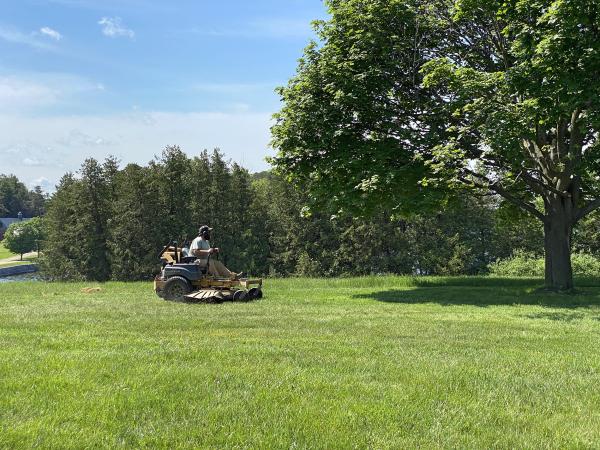Mowing Update: Reducing Our Carbon "Lawn"-print
Last year we reduced the total acres we mowed, mowed less frequently, and raised the blade when we did. Limited seasonal staffing due to covid gave us this opportunity to scale back our practices and improve our environmental outcomes. So what happened?
Our new strategy reduced our mowed acres by a third, and our total hours of mowing by close to 50%. Here’s how it broke down.
Less lawn and fewer mowing hours meant a smaller carbon footprint. Each year, at least 6 gallons of fossil fuel are needed to mow an acre of lawn, and each gallon of gas generates nearly 20 lbs of CO2. Doing the math, mowing 874 acres of lawn in 2020 produced over 100,00 pounds of CO2, compared to over 150,000 pounds in 2019. It’s too early to know whether the mowing schedule also benefited pollinators or other flora and fauna, but we’ll be keeping an eye on that. (If you visit, you can, too!)
We’ll continue with our 2020 plan this year: mowing fewer acres, and some less frequently, including larger swaths like the north lawn of the Farm Barn or the Breeding Barn lawn. All lawns apart from mowed ribbons beside the roads and trails will only be cut 3-4 times a year. And we’ll still adhere to “Raise the Blade” – an environmental campaign of the Lake Champlain Basin Program and continue to highlight the Unlawning America project of Burlington City Arts.
We’re also excited to be adding two electric mowers and electric trimmers to our mowing management plan. These mowers generate zero direct carbon emissions, no harmful air pollutants, and make far less noise than a conventional gas-powered lawn mower. (According to California’s Air Resources Board, operating a commercial lawn mower for just one hour emits as much pollution as driving a Toyota Camry about 300 miles.) Learn more about the Mow Electric! campaign in Vermont.
We’re looking forward to a second year of mowing less with more environmentally friendly equipment. Maybe it will inspire you to rethink that trim swath of green in your own backyard or along your street.



